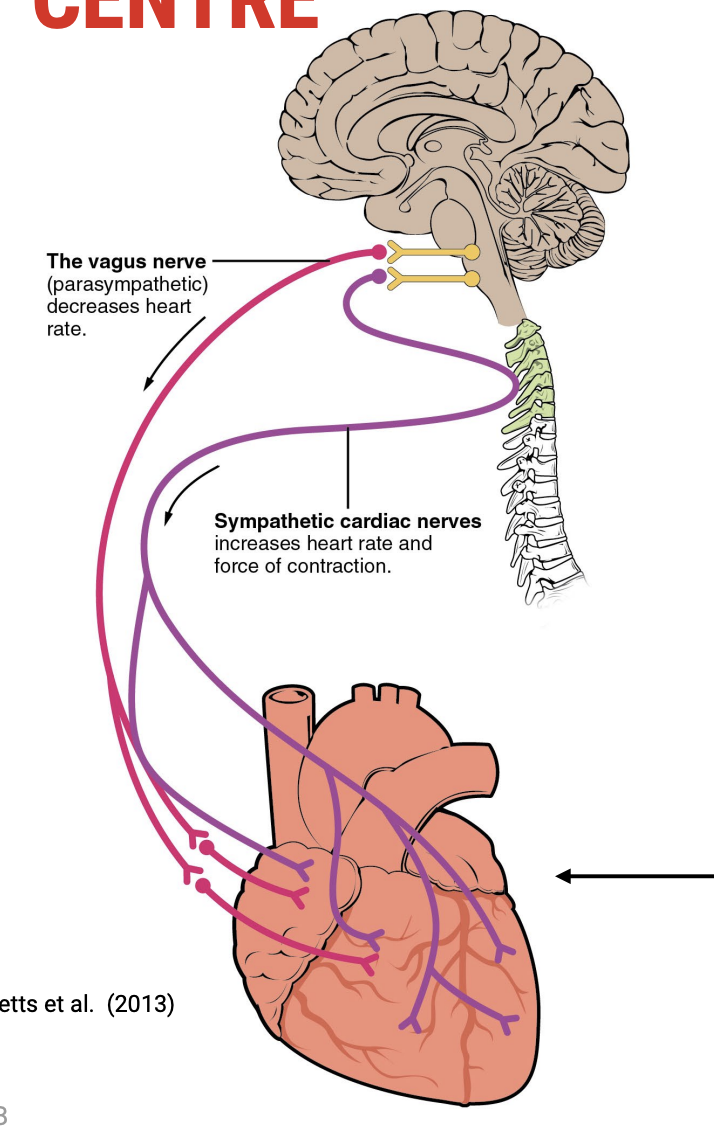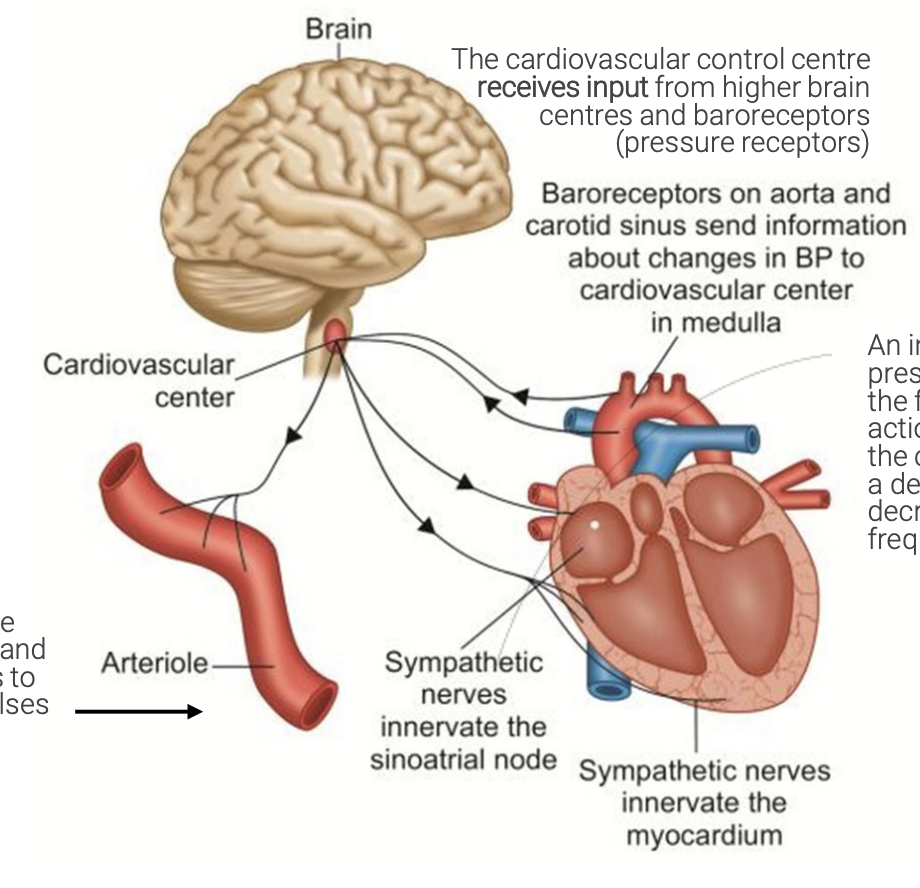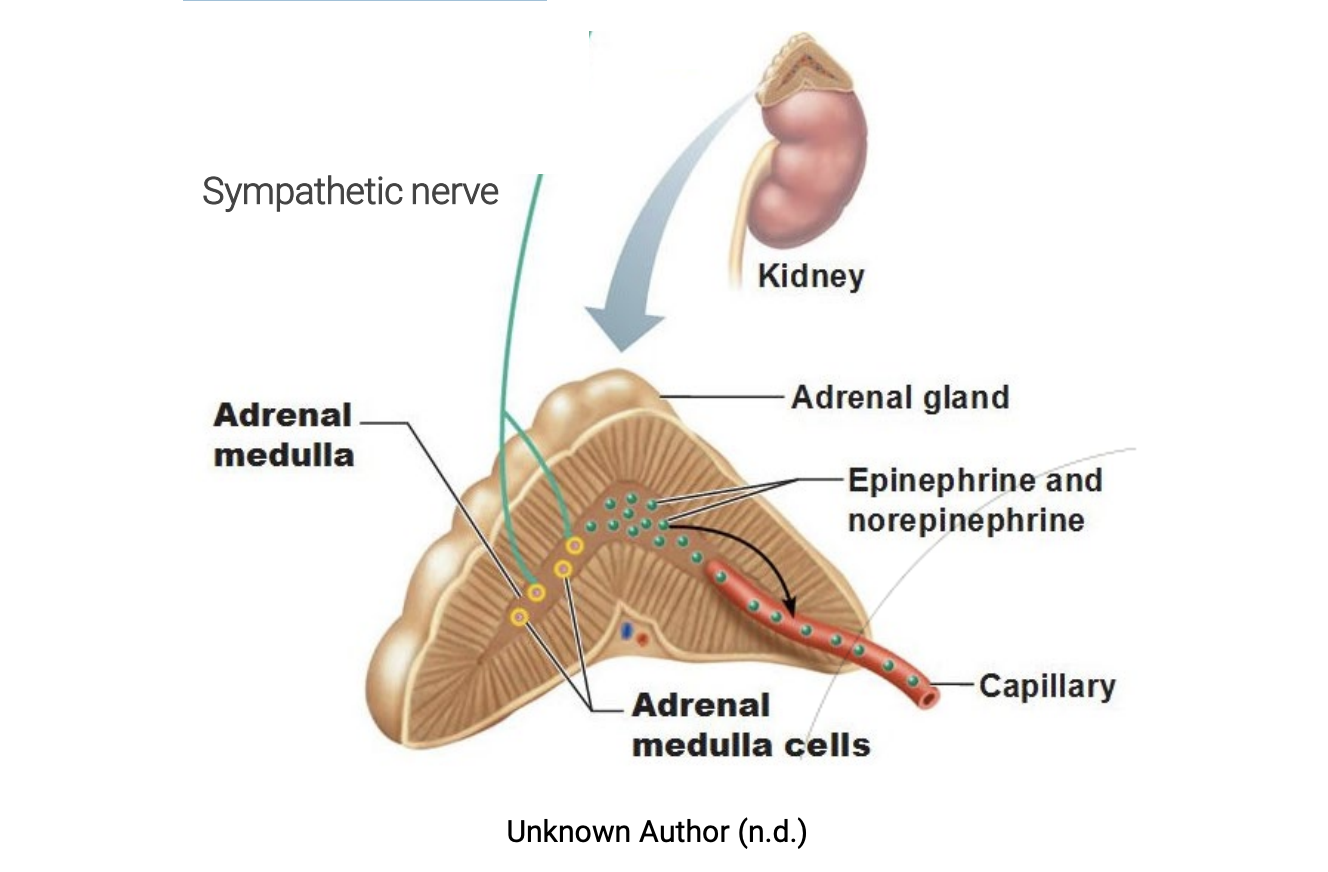Physiological Control of the Cardiovascular system
1/14
There's no tags or description
Looks like no tags are added yet.
Name | Mastery | Learn | Test | Matching | Spaced |
|---|
No study sessions yet.
15 Terms
Cardiovascular control centre
Location: Brain Stem
Function:
Regulates heart rate
Contractility of ventricles (how forcefully they contract)
Blood vessel diameter (vasoconstriction/vasodilation)

Output of the cardiovascular system
Parasympathetic and sympathetic nerve impulses sent to the heart and blood vessels
Vagus nerve
Sympathetic cardiac nerves
Vagus nerve
Nerve within the brain stem that sends signals to the heart via the parasympathetic nervous system.
Decreases heart rate
decrease in heart rate is achieved by decreasing the rate of pacemaker potentials in the SA node
Sympathetic cardiac nerves
Nerve within the brain stem that sends signals to the heart via the sympathetic nervous system.
Innervate the SA node & myocardium
achieved by increasing the rate of pacemaker potentials in the SA node
Increases heart rate and force of ventricular contractions (contractility)
Causes an increase in stroke volume
Input of the cardiovascular control centre
Input from higher brain centres that travel down to the brain stem
Input from pressure receptors (baroreceptors)
Baroreceptors
Pressure receptors
Location:
Aorta
Large blood vessels around the heart (e.g carotid sinus)
Function:
An increase in blood pressure, causes an increase in action potentials and signals sent to the brain, and vice versa

Control of heart function
Autonomic nervous system (sympathetic & parasympathetic)
Endocrine system
Intrinsically
Intrinsic mechanism that controls the heart
Increased venous return
results in more blood in the ventricles, which stretches the heart muscle also increasing the force of contraction and stroke volume
Endocrin system & Heart function
An increase in sympathetic outflow (fight or flight response) to the body causes the adrenal medulla to release the hormones epinephrine and norepinephrine, which also increase heart rate and force of ventricular contraction

Controlling blood vessel function
Sympathetic nervous system
Intrinsically (locally)
Sympathetic nervous system
Sympathetic cardiac nerves of the cardiac control centre
Sympathetic nerve activity causes the arteries and veins to contract, in arterioles this can reduce blood flow to an organ, and in veins it can help propel blood towards the heart
Fight or flight response causes vasoconstriction in skin arterioles so blood can be diverted to skeletal muscles that might need to contract (e.g if you are fleeing a dangerous situation/fighting)
Intrinsic mechanisms controlling blood vessel function
Localised chemical conditions in organs can regulate blood flow (intrinsic mechanism).
Often occurs in response to increased metabolism. Causes a need for increased oxygen and increased nutrient supply
The following local chemicals promote vasodilation:
decreased oxygen
increased carbon dioxide
decreased pH
increased extracellular potassium
nitric oxide released from the endothelium (inner layer of blood vessels)
Short term blood pressure control:
Baroreceptor reflex
Activated whenever blood pressure decreases or increases
More sensitive to decreases in blood pressure
More sensitive to sudden changes in blood pressure than gradual changes
Baroreceptor Reflex Scenario:
Standing up from lying down
When moving quickly from lying to standing, gravity pulls blood downwards away from the heart
Reduced venous return and cardiac output, decreasing arterial pressure (causing dizziness as less blood flows to the brain)
Decreased arterial pressure reduces stretch on sensory fibres in baroreceptors, decreasing the frequency of action potentials to the cardiovascular control centre
Control centre responds by increasing sympathetic nervous system output and decreasing parasympathetic output
As a result, heart rate increases, force of contraction of ventricles increases (increases stroke volume), and arterioles vasoconstrict to further increase pressure
Altered heart function (increase in heart rate and ventricular contractility) increases cardiac output
Vasoconstriction of arterioles increases peripheral resistance
Both of these changes act to increase arterial pressure (within seconds)
Long term blood pressure control:
Kidneys
Function:
Control blood volume
Control degree of arteriole vasoconstriction
Decreased blood pressure sensed
Renin is produced
Renin production gives rise to angiostenin II, which is a chemical that causes blood vessels to constrict (rapid reaction)
Angiostenin II also causes the release of aldosterone from the cortex of the adrenal gland
Aldosterone causes kidneys to reabsorble water and NaCl, increasing blood volume. This takes hours to days to come into effect.
